The new Terna power station is an industrial architecture that merges into the unique historical and natural landscape of the island of Capri. Thus the station becomes a discreet element, elegantly integrated into a unique natural context. The new power station completes the electrical connection between Capri and the mainland, that makes possible to provide the island with energy from renewable sources and to reduce polluting emissions to zero while making the island safer at the same time.
The new power line, entirely underwater and underground, will deliver higher quality, reliability and efficiency to the local electrical service. The decommissioning of the diesel plant which was on the island and the possibility of providing electricity from renewable sources – coming from the mainland – will bring considerable benefits from an environmental point of view. At the same time the inclusion of Capri in the national electric grid will guarantee savings for the collectivity and for the electric system and a 130-thousand-ton reduction in CO2 per year.
The architectural project
An industrial building developed from the special context of the site, which integrates into the natural landscape with a sense of renewed harmony. Materials, geometries and details preserve the same richness and vibration of light the natural scenario offers. The orography of the land determines the layout of the power station: the limestone crags going up from the Marina Grande become retaining walls or buildings, while the vegetation softens the visual impact, by occupying empty spaces in a spontaneous manner.
Facades and Geometry
The industrial character of the architecture is expressed in the strong quality of the materials and details, enriched by finishing and assembly particulars. Taking the distinctly aggressive environmental conditions into account (salt air, humidity, UV rays), certain solutions were developed to reduce maintenance to zero. The architectural finishing of the complex consists of several geometric elements, obtained by basic trapezoidal formal abstraction, which overall create variable and vibrant compositions.
The containment panels are in thermal break reinforced concrete, finished with natural split marble grit in the colours of limestone and in trapezoidal shape. The same design used for concrete panels is applied to the modular panels in burnished brass sheet which are used for railing, gates, screens and fencing. The visual effect of the solid and void design is inverted, thus increasing the structure’s permeability by using more voids. All the material was used without waste by processing scrap for the plates to be inserted into the concrete panels.
Landscaping
Greenery creeps through the volumes by occupying empty spaces, spreading out spontaneously just as it does in the areas surrounding the lot and in the limestone walls of the island. The vegetation is typical and local with evergreen shrubs and plants to guarantee the constant mitigating effect throughout the year and to minimise maintenance. The evergreen vegetation was selected according to their colour, scent and dimensions, in order to optimise mitigation and to have fruits and flowers with a chromatic effect that changes with the different seasons of the year.
To the north there are evergreen oaks, strawberries and carob trees – which can visually screen the installations, thanks to their height – and the pre-existing downy oaks, preserved and freed from the dead wood and the weeds covering them. Growing up and near to the retaining walls are Italian buckthorn, rosemary, Tarantine myrtle, lentisk, euphorbia and lithodora, while agaves were placed in strategic points in order to prevent access. The greenery is made complete by native herbaceous species to fill in all the spaces with a touch of colour added to the green.
The light
The lighting design was developed in full respect of the landscape and minimising any light pollution. The lighting devices, with cut-off parabolas, were positioned to hide lighting sources. LED technology was adopted to reduce consumption and waste. The lighting design between the railing and the walls illuminates the perforated sheets upwards and walls downwards, thus making the view of the power station evocative also by night. Source by Frigerio Design Group.
- Location: Capri, Italy
- Architect: Frigerio Design Group
- Project Team: Enrico Frigerio, Carola Ginocchio, Fabio Valido, Federico Biassoni, Daniele Bona, Daniela Galletti, Emanuela Masala, Giulia Pasqualini Galliani, Anna Tsareva
- Structure: Mascolo Ingegneria
- General Contractor: EDILDOVI S.r.l.
- Prefabricated construction: Beton Costruzioni S.p.A.
- Metallic carpentry: Cerrato Officine S.r.l.
- Client: TERNA Rete Italia S.p.A.
- Area: 3000 sqm; building 1000 sqm
- Year: 2018
- Photographs: Enrico Cano, Courtesy of Nemo Monti

Photo © Enrico Cano 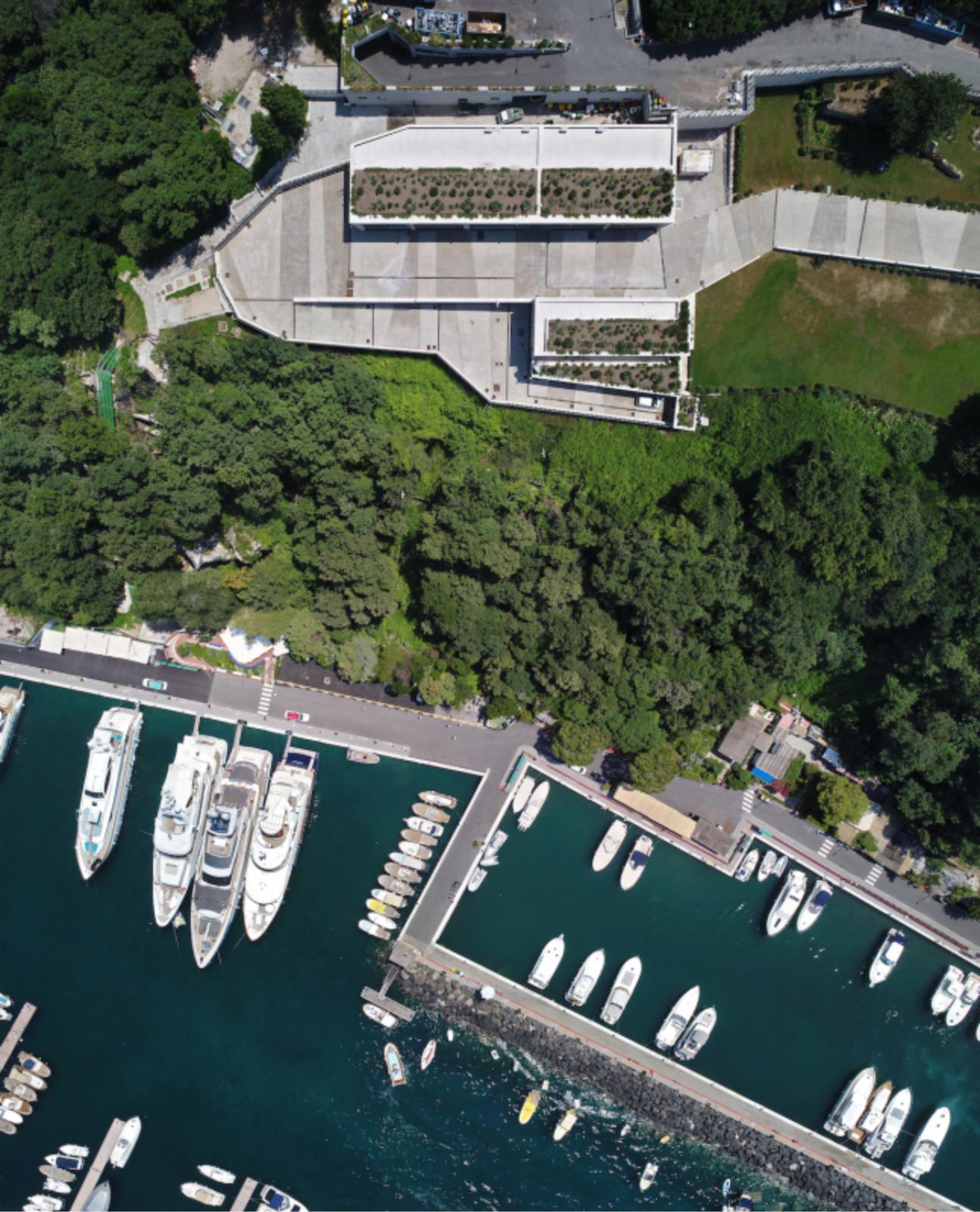
Photo © Enrico Cano 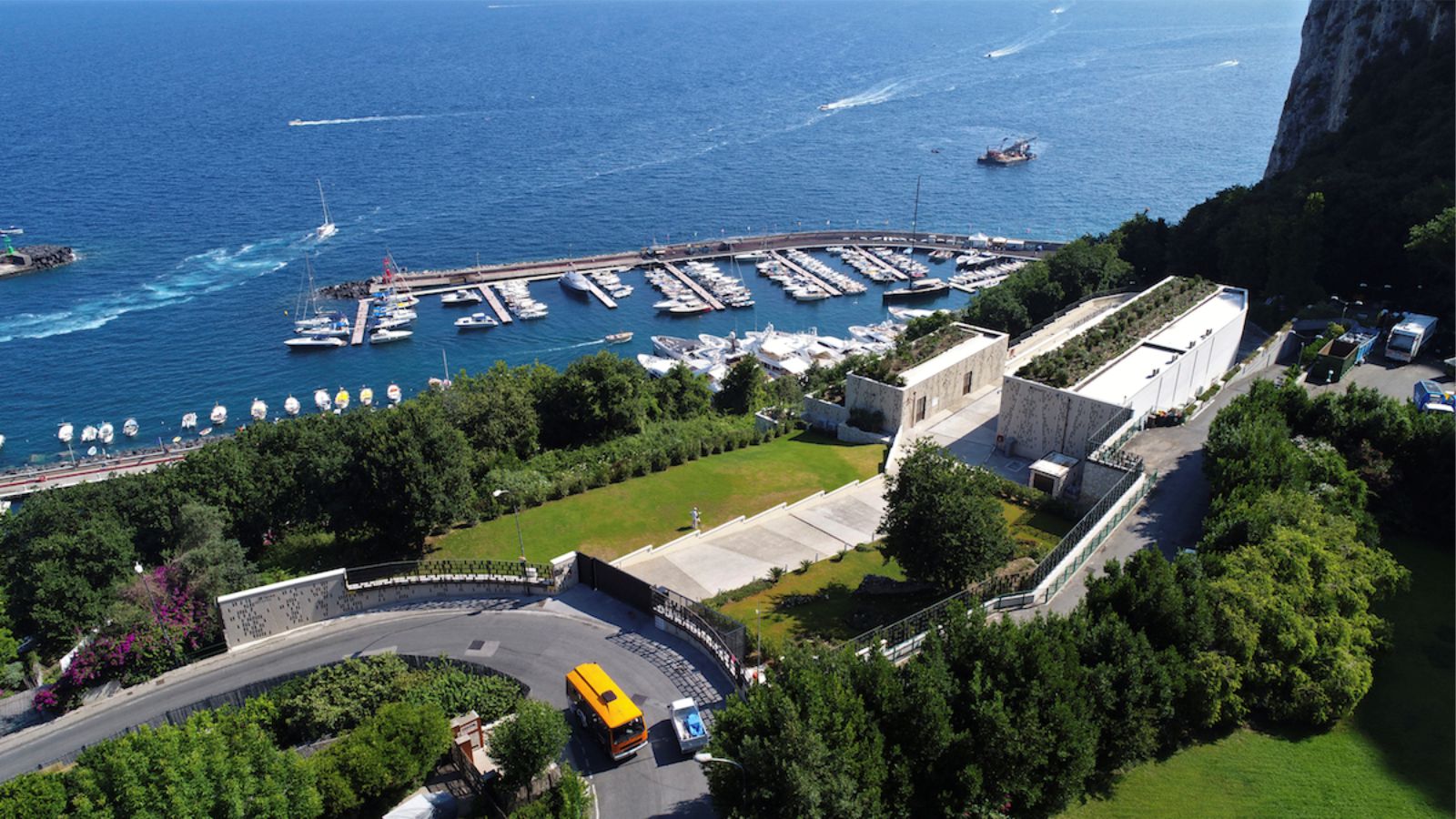
Photo © Enrico Cano 
Photo © Enrico Cano 
Photo © Enrico Cano 
Photo © Enrico Cano 
Photo © Enrico Cano 
Photo © Enrico Cano 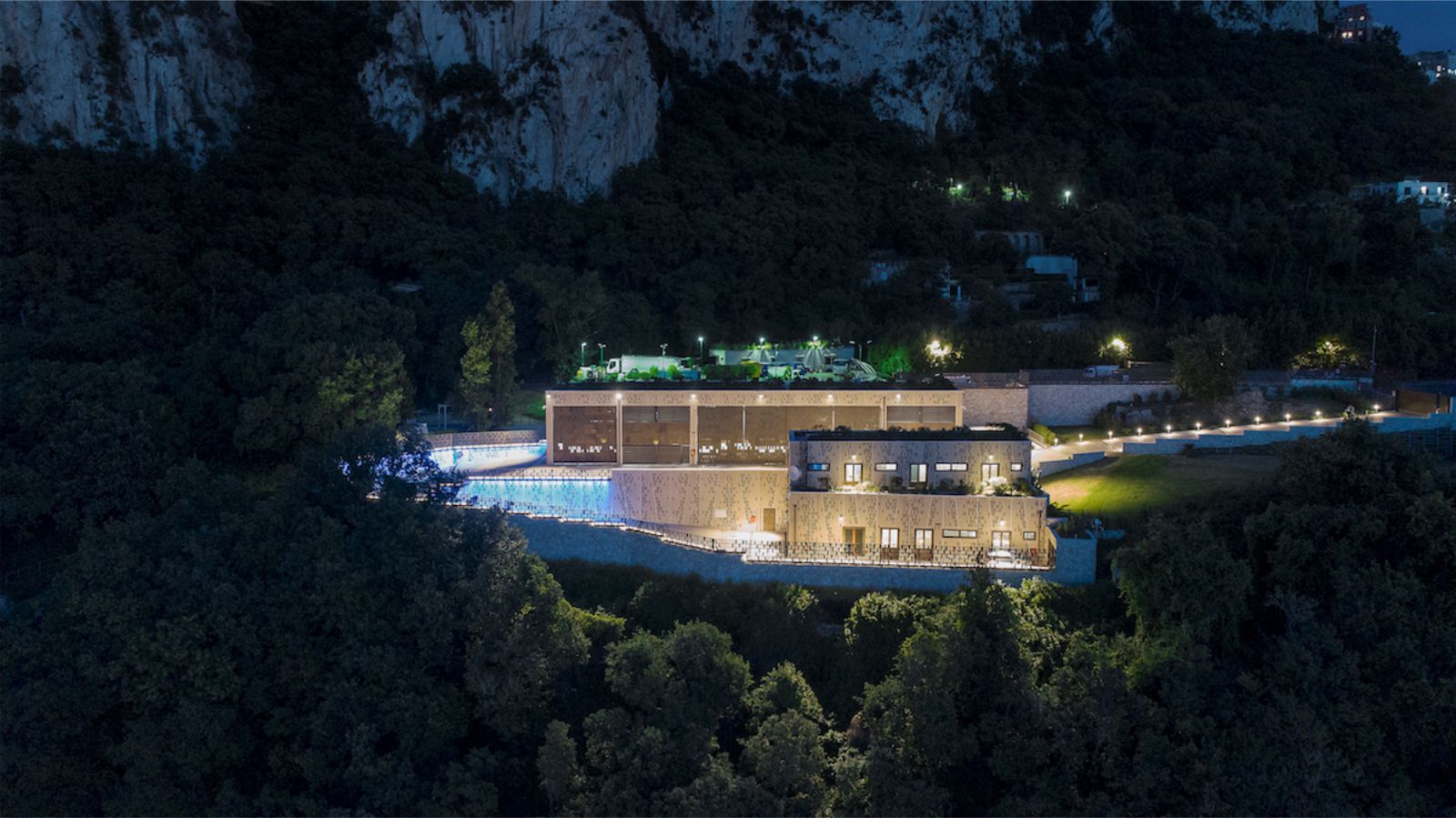
Photo © Enrico Cano 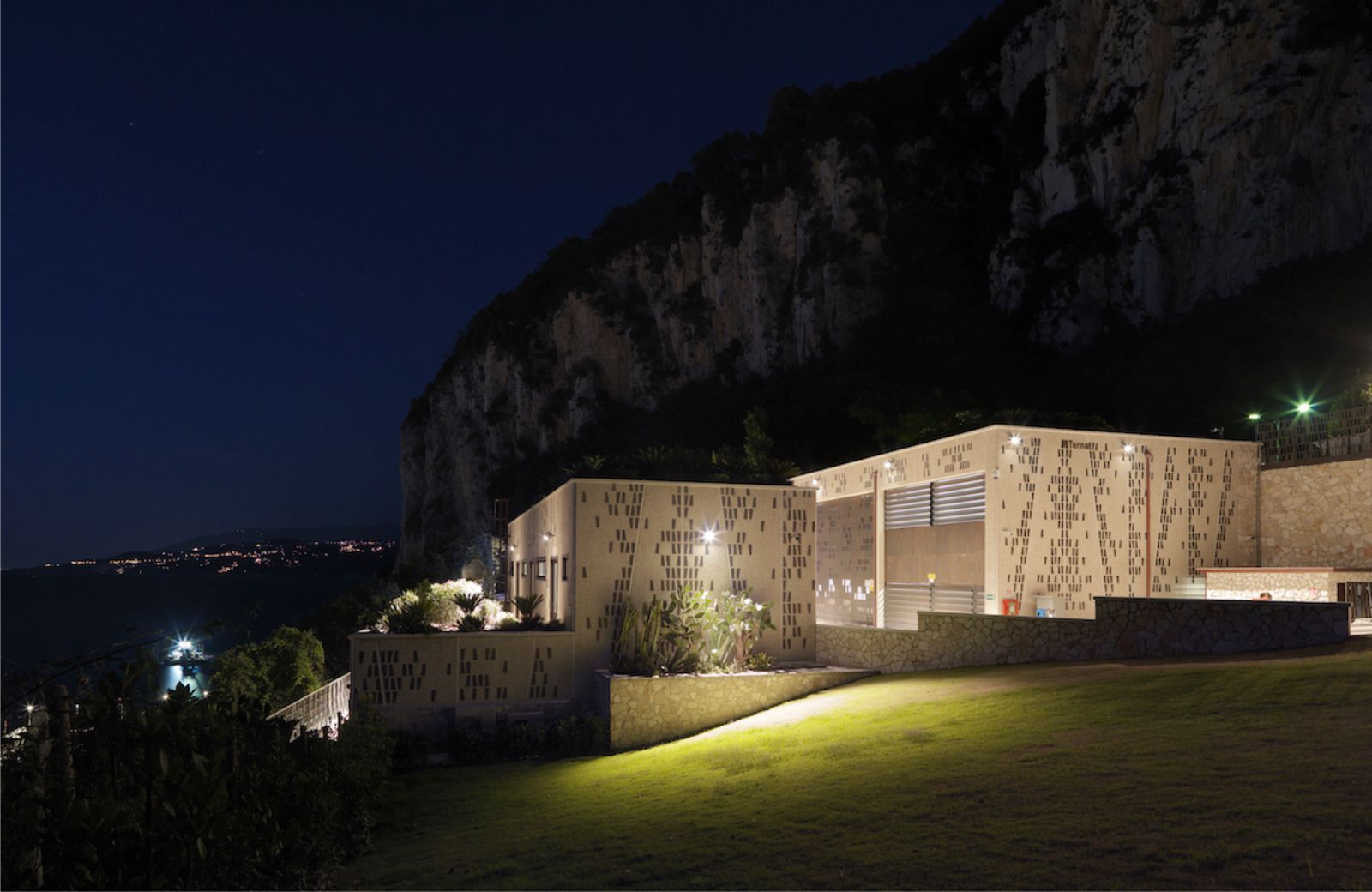
Photo © Enrico Cano 
Photo © Enrico Cano 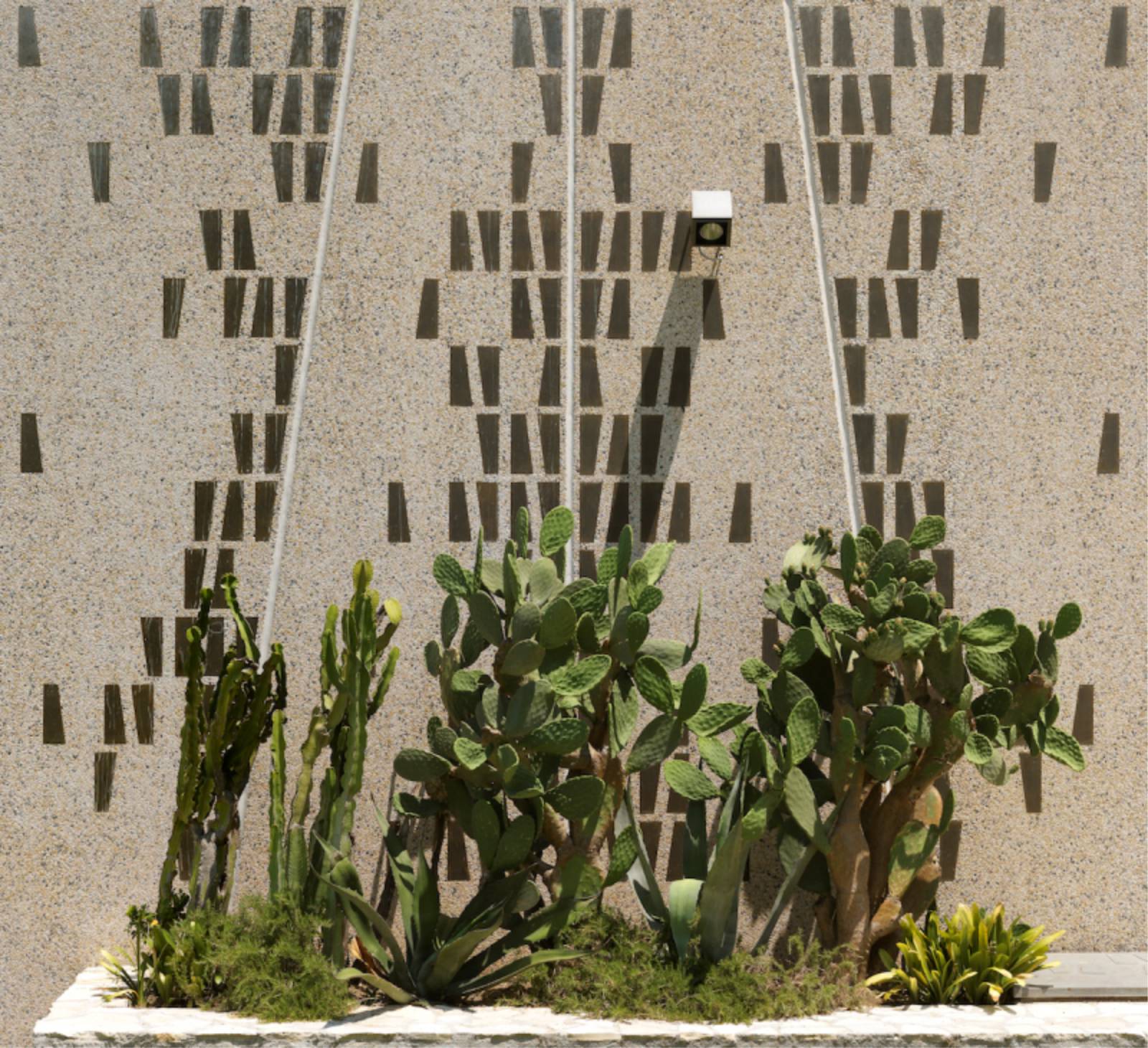
Photo © Enrico Cano 
Photo © Enrico Cano 
Photo © Enrico Cano 
Photo © Enrico Cano 
Photo © Enrico Cano 
Site 
Section

